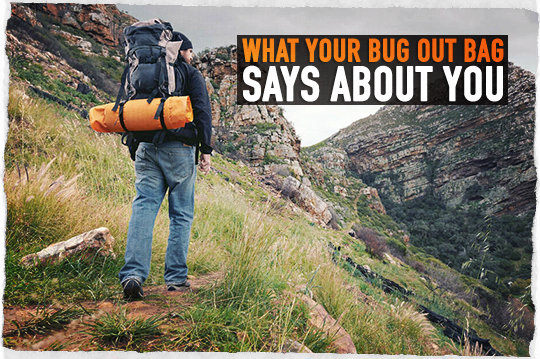
Contents May Reveal Your Level of Training and Whether You Are Ready or Not
You have your backpack on the floor with items surrounding it, and at first glance, it does not look like everything will fit inside. Everything must go into the bag however, because each item is needed for survival, right?
Much of the survival gear is still in its wrappers, the magnesium stick has never been used and that is a good thing in your mind. Why waste valuable magnesium playing around in the back yard with it, you will need it to make fires out in the wild.
The Ferro rods have nary a nick on them and this also pleases you, you like the fact that everything is new and ready for prolonged use out on the trail. You do have packages of matches and disposable lighters however. Research shows that a prepared person always has more than one way to start a fire.
Your hiking boots cost a pretty penny, and so you look for scuff marks before putting them in the bag. You tried them on the day they arrived, but you were worried they would become nicked up if you wore them around the yard for too long. The hiking boots need to be in perfect shape if you have to bug out, because your feet deserve the best.
Extra clothing with the tags still on them is piled neatly ready for the pack. You have a winter coat, jeans, heavy flannel shirts, underclothes and socks. You wonder if you can wrap all the clothing in your poncho or the tarp to save space. You are now trying to figure out how the sleeping bag you ordered can be strapped to the outside of the pack. The directions that came with the pack said it could be.
Ziploc bags of protein bars, MRE’s, small cans of tuna and chicken along with a portable stove are at the ready along with a 12-pack of bottled water. You also have water purification tablets, a small stainless steel mess kit, rope, metal canteen, a heavy duty fixed bladed knife, which has never felt a honing stone by the way. You also have a multi-tool, whistle, mirror, and new packages of batteries, two flashlights, gloves, hat and several bandanas still in the packaging from the store. You are ready for anything.
Your first aid kit has never been opened so you are convinced that nothing inside it has been corrupted. You double-check the list you printed off the Internet. You compare your items to the ones on the list, and it all looks good so far.
Does Any of the Above Sound Familiar?
If it does, it is not likely you will get very far from your front door. Bugging out is not to be taken lightly. It is not something to do just because some Internet blog says it is the thing to do. Survival is about making the right decisions at the right time, and for most people staying put is the right decision.
However, do not confuse bugging out with evacuation. There will be times when evacuation is needed but usually with the assumption, you will be back in a few days after the flood waters have receded, or the chemical spill from a train derailment has been cleaned up.
Bugging out implies that society is in turmoil or an attack on your city is probable and the country is in chaos. There would be other reasons to bug out of course, and so decisions have to be made based on the best information available at the time.
Bugging out from a known location to an unknown one and being able to survive in between takes skills, skills that anyone can acquire, if he or she puts in the time and therein lays the problem.
If you have not worn out a pair of hiking boots from hiking with a pack on your back and if your survival gear is not banged up somewhat from camp use then you are not ready.
Bugging out in most cases would be more dangerous than staying put. You do not want to flee one crisis only to find yourself in a worse situation. Practice is needed before you can attempt anything, and before you can practice, you need skills that can be practiced until they are second nature.
You need to wear a magnesium stick down to the nubs, and you need to break a few Ferro rods before you can even think about leaving. You need calluses on your hands from swinging a hatchet or machete, because shelters do not build themselves.
Cuts, bruises and blackened fingernails may mean you are on the right track, but you are not there yet, because when you are, you will not be sitting on the floor wondering what next.